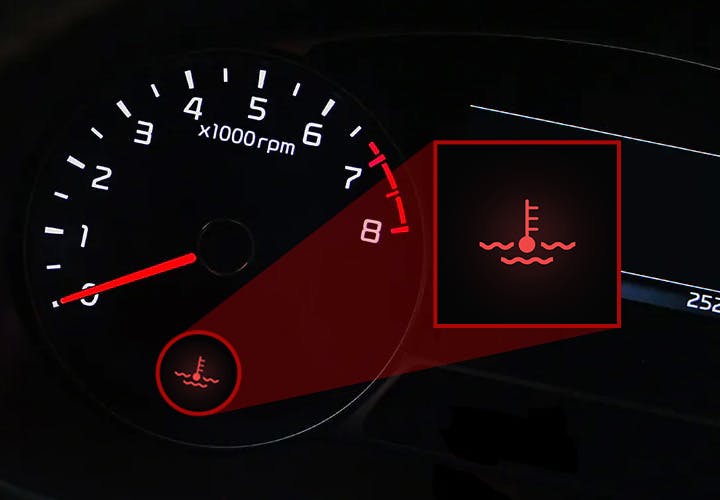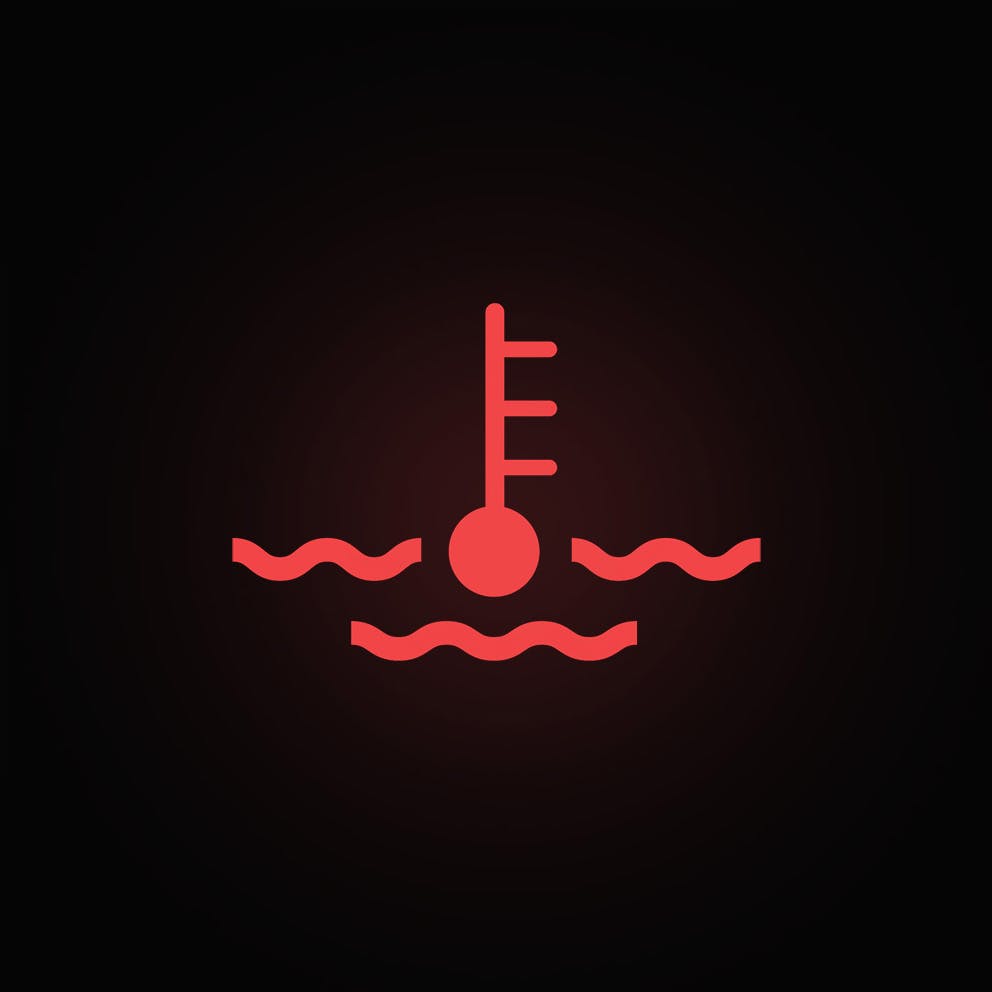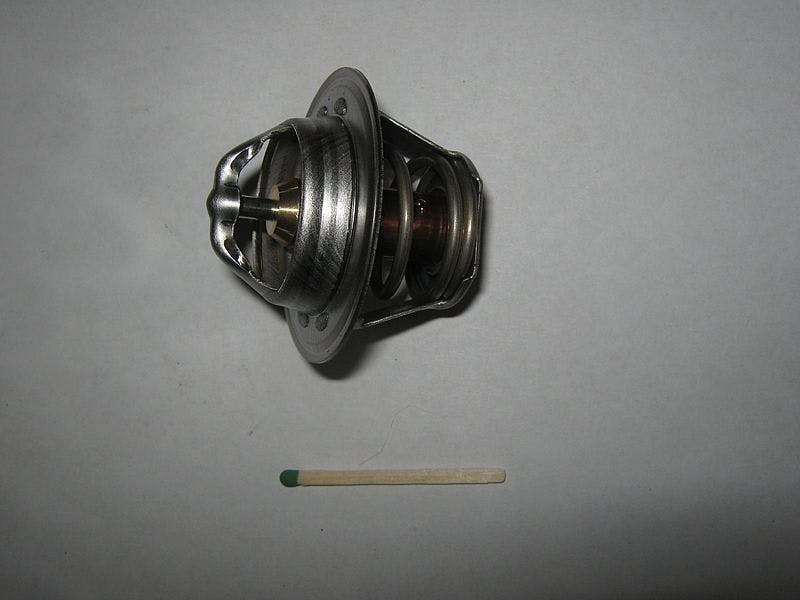Red Engine Coolant Light: Stop your car now! 🚨

A red engine coolant light warns the driver of two potentially serious problems: a low coolant liquid level or a high coolant temperature.
Both of these problems are very serious; therefore, stopping driving and turning off the engine immediately is necessary. Otherwise, there is a risk that the engine will start to overheat, as a result of which it may even seize.
Spis treści
- What does the Red Engine Coolant Light look like?
- How can I fix the Red Engine Coolant Light after I turn off the engine?
- The most common causes of coolant leaks
- There is enough coolant liquid, but the engine overheats
- Can I continue driving with the Red Engine Coolant Light on?
- Can the Red Engine Coolant Light come on when the coolant temperature is low?
- Summary
- Video explanation of the Red Engine Coolant Light
However, you should know that there are two engine coolant warning lights. Both of these have identical shapes - the only difference is in color. While a blue engine coolant light is informative and appears when the engine is cold, a lit red warning light indicates a serious problem.
What does the Red Engine Coolant Light look like?

Its shape may vary slightly depending on the model and specific car brand. Some cars have a coolant temperature indicator instead of a red warning light. This indicator lights up red when there is a problem.
Whether it's a red engine coolant warning light or just a red light next to the coolant temperature pointer, the problem is serious, and you need to pull over immediately and turn off the engine.
Related article - Blue Engine Coolant Light: What does it mean? 🥶
How can I fix the Red Engine Coolant Light after I turn off the engine?
You can't fix this on your own. After you turn off the engine, it is necessary to wait until it cools down at least a little to approx. 60 °C (or 140°F). Otherwise, there is a risk that after opening the coolant expansion tank, the hot liquid will shoot out and scald you.
After opening the expansion tank, it is necessary first to check the coolant level. If the coolant liquid is low, it can be that:
- the coolant liquid is leaking out of the engine and cooling system
- the coolant liquid enters the combustion chamber
However, if you can't, for some reason, call a tow truck, you can add some water or, even better, a 50/50 mixture of water and antifreeze to the coolant reservoir. This may be sufficient while you drive to a garage or repair shop where a professional can fix the issue.
The most common causes of coolant leaks
- cracked gasket under the cylinder head
- cracked cylinder block
- cracked cylinder head
- cracked radiator
- one of the radiator hoses is broken
There is enough coolant liquid, but the engine overheats
The red engine coolant light may come on even with sufficient coolant liquid. If this happens, the warning light signals that the engine overheats, possibly caused by boiling coolant liquid.
There can be several other reasons for which the engine overheats, but it should be noted that they are not as serious as a problem with a coolant liquid leak. The repair is, in most cases, also not so costly.

The most common cause of the coolant liquid overheating is a faulty thermostat, which is either stuck or completely closed. If that happens, the coolant liquid flows only through a small cooling circuit and thus does not reach the radiator. This leads to a sharp increase in its temperature, and if the thermostat does not open in time, it will cause the coolant to boil and the engine to overheat.
Other causes of engine overheating include a problem with turning on the radiator fan. The radiator fan is one of the key components of the vehicle's cooling system. Its role is to cool the coolant in the radiator.
Can I continue driving with the Red Engine Coolant Light on?
No, not at all. A low coolant level or a too-high temperature can cause the engine to overheat or seize. Repairing a seized engine is often too expensive, and the car ends up in the scrap yard.
Sometimes, this warning light may appear due to a sensor malfunction. However, continuing to drive is at your own risk, and I do not recommend doing so unless you're sure it's just a faulty sensor.
Can the Red Engine Coolant Light come on when the coolant temperature is low?
No, the blue light informs about the low temperature of the coolant, which is, after all, its only function. However, the low temperature of the coolant is not a reason to panic, but until the coolant warms up to the optimal temperature, you should drive gently.
Summary
A red engine coolant light warns of two serious problems that can cause fatal damage to your car's engine. In such a case, you should stop your car and turn off the engine immediately to prevent it from overheating and seizing.